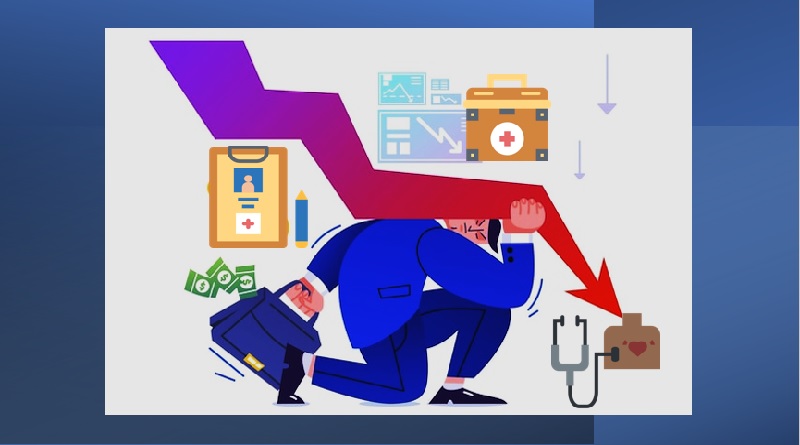In 2021, healthcare expenditures on a global scale exceeded USD10 trillion, making it one of the most significant industries on the planet. However, this development is threatened by the inflationary environment. While the search for newfound efficiency and cost-savings is undoubtedly helping some of the major health trends, such as adopting telehealth or changing to healthier behaviours, growth in the personalization and transformation of medical production may stall due to the high costs of initial investments and businesses looking for cost-saving alternatives.
A change to better behaviour is made easier by inflation.
Prior to the COVID-19 pandemic, a change toward lessened cigarette use, moderate alcohol consumption, a balanced diet, and adequate exercise was made possible by the high frequency of lifestyle diseases. Due to the pandemic’s increased health awareness, this trend has been more pronounced over 2019–2022. In 2022, 75% of global respondents will already be trying to quit or minimise smoking, 48% will be discontinuing drinking alcohol, and 64% will want to improve their diets, according to the Euromonitor International Voice of the Consumer: Health and Nutrition and Nicotine Surveys.
The inflationary environment is a big push for those who plan to reduce consumption of alcoholic drinks and tobacco products to be healthier and save money. Yet, moving to a healthy diet might be trickier due to the higher cost of healthier options. Therefore, aiding consumers in their search for affordable but nutritious food and encouraging eating healthily through bundling or giving rewards could be the strategic pushes required to keep the trend going.
Personalisation takes a step back
Personalised healthcare (precision medicine (PM)), driven by the increasing prevalence and economic burden of chronic diseases and rising preference for tailored products, is penetrating healthcare systems. According to the Euromonitor International Voice of the Industry: Consumer Health Survey, 54% of industry professionals thought that personalising products is an influential future trend in 2021.
Inflation generally slows personalisation in healthcare. When faced with rising prices, patients choose cheaper non-branded products and traditional therapies. Likewise, producers reconsider pursuing costly Research & Development (R&D) against a backdrop of falling demand and increasing input costs. Yet, the shift from niche to mainstream production, evolving collaboration and extensive communication about the potential savings might act as a buffer to the inflationary damage.
Transforming medproduction pauses
The manufacturing of medicinal products is changing to embrace the benefits of Industry 4.0 as well as the transformation of the supply chains. Pharma 4.0 has gained increasing importance as a way to pull up sluggish productivity, increase efficiency and gain competitive advantage. Pharmaceuticals and medical equipment producers aim to transform the production process with automation and robotisation, cloud technology, artificial intelligence, machine learning and other digital technologies.
Increasing digitalization and lengthening or widening supply chains are the ways to boost efficiency, save money, and minimise uncertainty in production processes. This is how the healthcare manufacturing transformation contributes to the partial answer to the inflation problem. However, the investment payback periods lengthen and profitability declines as a result of rising input costs, which could hinder the implementation of Pharma 4.0 and supply chain transformation. The three main problems caused by the inflationary environment—rising prices for high-tech components, skyrocketing energy costs, and remaining uncertainty—might be effectively addressed by scenario and contingency planning, leveraging current technologies, and working toward energy independence.
Telehealth gets more attention as a way to reduce healthcare costs
Telehealth in its broadest sense refers to the provision of healthcare services remotely, using video conferencing, digital transmission of medical images and remote access to patient records. According to the Euromonitor International Voice of the Consumer: Health and Nutrition Survey, in 2022, 69% of respondents worldwide found virtual doctors or medical professionals trustworthy, up from 58% in 2019, which showed that the trend is gathering momentum globally.
Consumers as well as the government start to recognise digital healthcare services as a cheaper alternative to traditional health services, therefore inflation should accelerate the overall adoption of telehealth. Taking advantage of public initiatives to gain credibility, targeting a wider audience to extend the clientele pool and bundling would come as natural solutions to promoting the telehealth trend.
Sustainability is taking baby steps in healthcare
High negative impact on the environment and intensifying competition among medical companies increased the importance of sustainability strategies in the healthcare sector. Strong corporate commitments and pressure from consumers are also expected to considerably improve the adoption of a sustainable agenda in the health sector, in addition to the ambitious sustainability goals adopted by the largest medical companies.
Due to the intricate manufacturing processes, the significant impact of outside influences, and the impossibility of making concessions regarding the product’s ingredients, sustainability measures are particularly expensive for the health industry. Prioritizing downstream emissions, forming partnerships for recycling and upcycling, and enhancing clear and honest communication are some approaches to enhance sustainability in a time of rising prices.
It’s challenging to succeed in an inflationary economy. However, health companies were not caught off guard by inflation, and the bulk of the top trends were already focused on cutting or managing expenses. Finding alternative raw materials, implementing more cutting-edge production technologies, automating and digitising processes, embracing sustainability, and improving communication are just a few of the steps that can be taken to help businesses control costs and develop resilience to deal with inflation and upcoming shocks.






